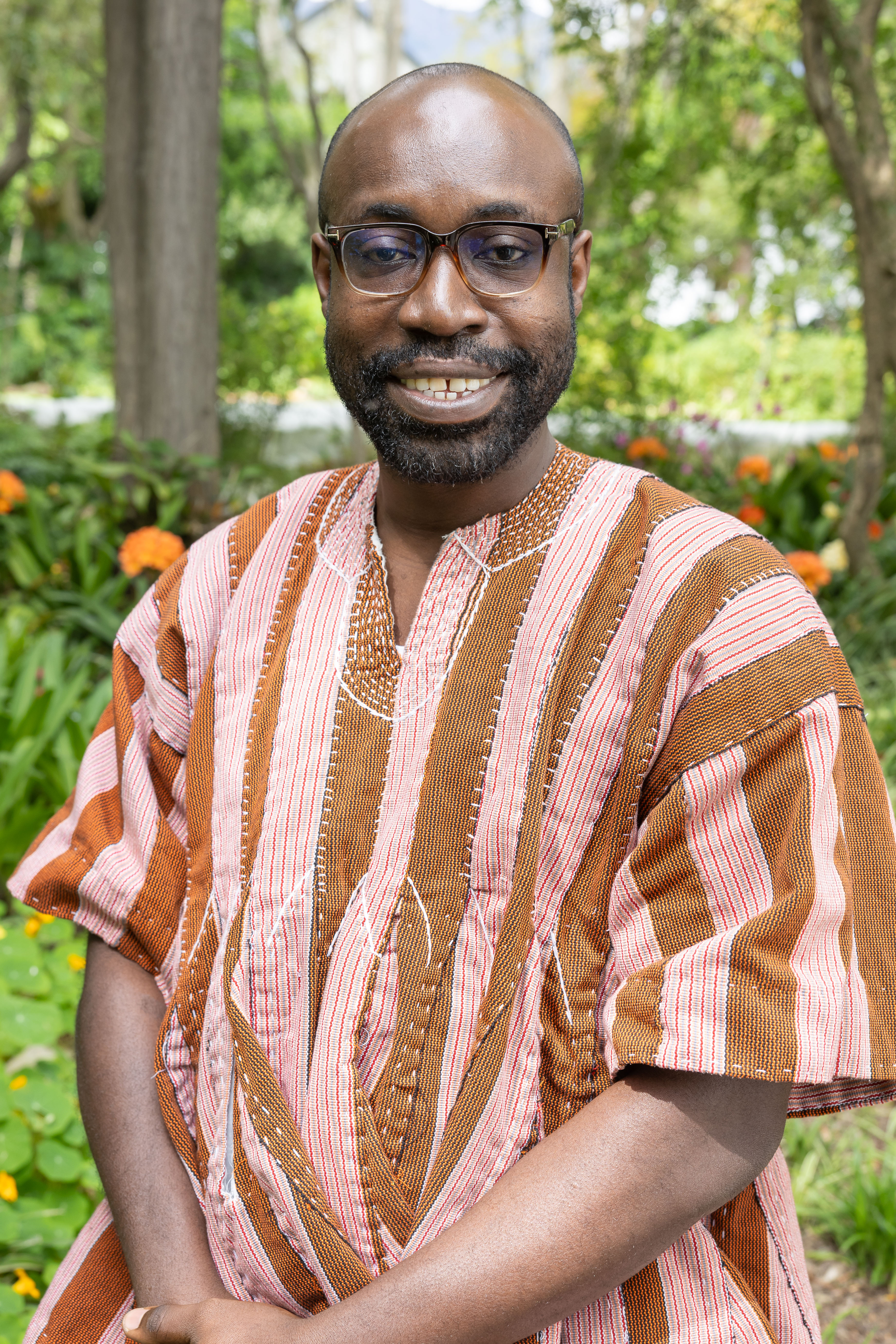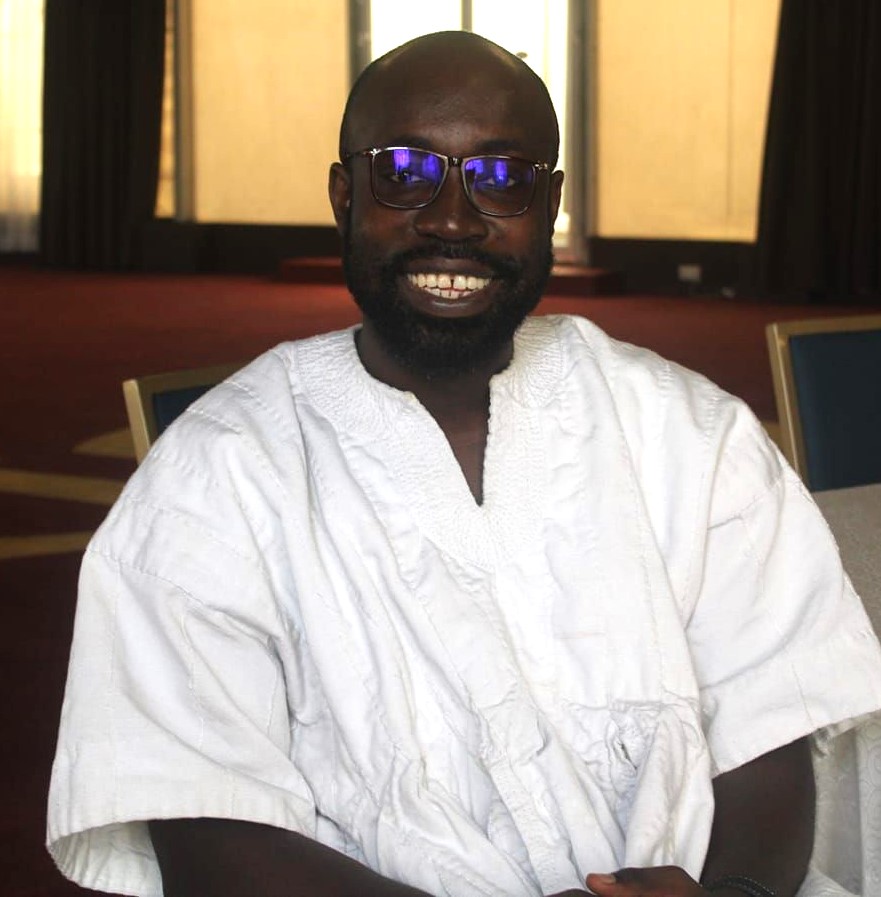“I will engage you on a very troubling trend of widespread wetland encroachment across many African cities. I hope to be able to convince you that nature is under siege,” said Iso Lomso fellow Lewis Abedi Asante of the Department of Estate Management at Kumasi Technical University in Ghana.
“Rapid urbanisation and population growth in Africa means the drylands are fully built and the wetlands are now the only available space,” he continued. “Wetlands are under threat. Nearly 50% of wetlands in Africa have been lost in the last five decades. There is evidence of massive transformation through drainage, landfilling, channelling of streams and construction of barriers and retaining walls. All to make land ready for property development.”
And Asante showed some of that evidence via land-relief maps from case studies in six African countries – the Sakumo Wetland in Ghana, the Ogun-Osun River Basin in Nigeria, Shashe Sub-catchment in Zimbabwe, Nakivubo in Uganda, Aberdeen Creek in Sierra Leone and Diepsloot Township in South Africa (Asante noted that South Africa is an interesting case with both Global North-type eco-developments alongside those typical of the rest of Africa).
He focused in detail on Sakumo which he visited in 2024. “Sakumo is a sad story,” he said. “It’s actually a protected site, one of five Ramsar sites, and home to 70 bird species and an estimated bird population of 30 000. Encroachment by developers means that it now exists only in pockets and lots of the birds have left. It’s a major case in Ghana – everyone knows about it – but I couldn’t believe my eyes.”
“Wetlands are an important resource. You can connect their benefits to each one of the Sustainable Development Goals. They help to regulate climate and hydrological cycles, and protect ecosystem diversity and habitats. They are described as the kidneys of the landscape. It’s prized land not wasteland,” he said.
“But describing the encroachment is not enough − we need to show how it occurs and who and what is affected.”
And, of course, such land encroachment is by no means new but has become a growing phenomenon worldwide.
“In the Global North greenery has become an agenda,” continued Asante. “Urban greening and gentrification attracts wealthy people, which then increases property values and rents, and low-income residents are displaced. This is ecological or green gentrification – and there are many examples in European countries like Spain, France and Denmark, as well as many studies. But what about African countries?”
He explained that gentrification is a process that involves the commodification of urban spaces. The different types include new-built and tourist gentrification, as well as studentification, airbnbification and ecological gentrification.
‘Gentrifiers’ are often wealthy individuals as well as large corporation or real-estate developers who want to make profits by exploiting rent gaps (the difference between the current and potential rent). In ecological gentrification the environmental improvements lead to increasing values and an increase in wealthy residents displacing lower-income residents.
A new concept
“But this doesn’t entirely fit all the African dynamics, so we have come up with a new concept − an African variant of ecological gentrification,” said Asante. “It’s overly simplistic to refer to the phenomenon merely as wetland encroachment. Instead, we propose the term ‘wetland gentrification’ as a more suitable analytical lens. Wetland gentrification is the process whereby land scarcity and rising property values in African cities drive indiscriminate depletion of urban wetlands for property development, leading to the destruction of ecological resources but also the eventual displacement of human populations through flooding.”
He explained the specific characteristics of wetland gentrification including urbanisation and customary stewardship; rent-gap dynamics; the formation of alliances among gentrifiers; and, the human and more-than-human displacement caused.
“Urbanisation in Africa is more rapid than globally,” he said, “therefore there is increased encroachment. But, typically, lands in Africa are owned by traditional or customary authorities. Former agricultural lands have been converted over time. Now that there are no more drylands to sell, attention is on the wetlands too. The value of wetland development increases and the traditional authorities and chiefs are taking advantage of the rent gap to sell these lands too.”
“They think they can build and increase property prices in areas by unleashing the value of marginal or idle lands,” he added. “But the high level of technology needed to transform these areas means that it’s also usually only the rich who can afford to build.”
He also explained that in many African countries development precedes planning. “The chiefs start selling the land before planning and zoning is done. By the time the state authorities come in the building has already started which is a real challenge.”
“Municipal authorities and environmental protection agencies do very little despite proclaiming the importance of protection,” he added.
If the building, zoning and planning is not well done, over time the surface run-off may increase enhancing the risk of flooding and damage to the properties. These changes can disrupt all the living and non-living inhabitants including the water and soil, plants and animals and eventually the humans too. “It’s destroying nature, including some that don’t have a voice,” said Asante.
“There is little resistance because people don’t understand the role of wetlands,” he continued. “This is all actually deepening urban poverty. Environmental practitioners must engage more to protect the few remaining wetlands.”
This picture also strongly highlights weaknesses in urban governance and planning, and institutional capacity in many African countries.
“We therefore advocate a collective environmental consciousness among all stakeholders and the need for enhanced responsibility towards protection of essential wetlands and greenery,” said Asante. “We are calling for more inclusive and ecologically sensitive urban governance and planning.”
To take this forward, Asante will hold a workshop during his fellowship to bring relevant stakeholders together and has put out a call for chapter submissions for a book which he hopes will contribute to knowledge on wetland gentrification.
“We want the book to come up with the framework and the ideals to measure up to – but this needs all the stakeholders, not just academics,” he said.
The wide-ranging discussion touched on the cultural and historical importance of land ownership in Africa and the need for changing political imaginaries about land, as well as the role of foreign property investors.
“There is too much low-rise building in African countries,” said Asante. “We need to build high-rise properties, but people still want to own their own land. The mindset must change at some point. If we continue to attach importance to owning land all the wetlands will go.”
“Political imagining is very important,” he added. “Political leaders need to come up with new ways of thinking. They don’t fully understand urbanisation and migration, and the need to find creative ways to create space and land for growing populations.”
“The call for sustainable urbanisation has never been more urgent,” he continued. “There is rapid urbanisation, growing socio-economic inequality and the challenges of climate change. Cities are at the centre of the problems.”
Asante ended by quoting marine biologist and conservationist Rachel Carson: “But man is a part of nature, and his war against nature is inevitably a war against himself.”


